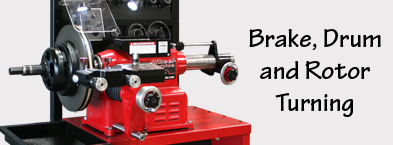

Cylinder heads and blocks may need to be resurfaced to restore flatness or to improve the surface finish, or milled to change the deck height for a variety of reasons.
The deck surface on the head or block may need to be resurfaced if the surface isn't smooth or flat. A head may need to be resurfaced after welds or other repairs have been made, or milled to increase the compression ratio. The manifold surfaces on a head may need to be cleaned up due to corrosion or erosion, or the angle changed slightly to better align with an aftermarket intake manifold. The deck surface on the block may need to be resurfaced. Whatever the reason is for resurfacing these parts, you want to do it quickly, efficiently and correctly. Mistakes here can be very expensive, because once metal has been removed there is no putting it back.
Don't assume close enough is good enough. Eye-balling the surface finish will tell you if the surface is really smooth (a mirror-like finish), really rough (like sandpaper) or somewhere in between, but it won't tell you if you are in the recommended range. Dragging your fingernail across the surface isn't much better, either, because a 30 Ra finish feels almost identical to a 50 Ra finish. And the smoother the finish gets, the more difficult it is to see or feel much difference.
The only way to accurately determine if the surface finish is within the correct range is to check it with a profilometer. This is an expensive electronic instrument that drags a diamond-tipped stylus across the surface to calculate its profile characteristics. The profilometer can then display various values for the surface including roughness average (Ra), average peak height (Rpk), average valley depth (Rvk), and even waviness. These numbers may not be needed for an economy Chevy 350 rebuild, but they can be critical when building high performance engines or durability engines. The mistake to avoid here is assuming the surface finish is correct when you haven’t actually measured it.







